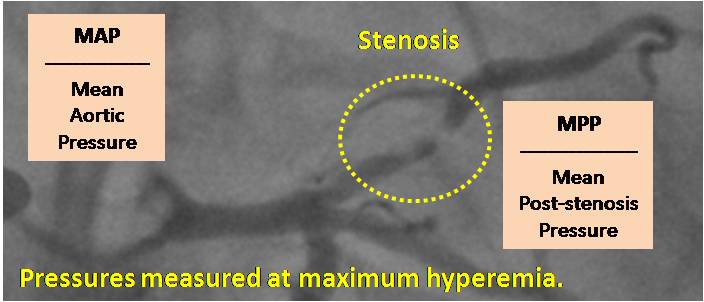|
ECHONOMY |
|||||||||||||
|
|
|||||||||||||
Definition |
|||||||||||||
| FFR stands for fractional flow reserve and is a measure of resistance in the epicardial (conductance) coronary arteries. | |||||||||||||
Technical Hints |
|||||||||||||
|
|||||||||||||
Calculator |
|||||||||||||
|
Mean arterial pressure (MAP) |
mm Hg |
||||||||||||
|
Mean post-stenosis pressure (MPP) |
mm Hg |
||||||||||||
Answer |
|||||||||||||
|
FFR |
|
|
|||||||||||
|
Interpretation |
|||||||||||||
|
The more severe the coronary stenosis, the larger the
pressure drop between MAP and MPP. In severe stenosis, MAP : MAP > 5 : 1.
Percutaneous coronary intervention is performed if FFR < 0.75.
|
|||||||||||||
|
|
|||||||||||||
Formula
|
|||||||||||||
Reference |
|||||||||||||
| Emanuelsson H, Dohnal M, Lamm C,
Tenerz L. Initial experiences with a miniaturized pressure transducer during
coronary angioplasty.
Cathet
Cardiovasc Diagn. 1991 Oct;24(2):137-43. Lamm C, Dohnal M, Serruys PW, Emanuelsson H. High fidelity translesional pressure gradients during percutaneous transluminal coronary angioplasty: correlation with quantitative coronary angiography. Am Heart J. 1993;126:66-75. [This article has a nice drawing of the pressure wire.] Pijls NH, De Bruyne B, Peels K, Van Der Voort PH, Bonnier HJ, Bartunek J Koolen JJ, Koolen JJ. Measurement of fractional flow reserve to assess the functional severity of coronary-artery stenoses. N. Engl. J. Med. 1996;334(26):1703–8. |
|||||||||||||


